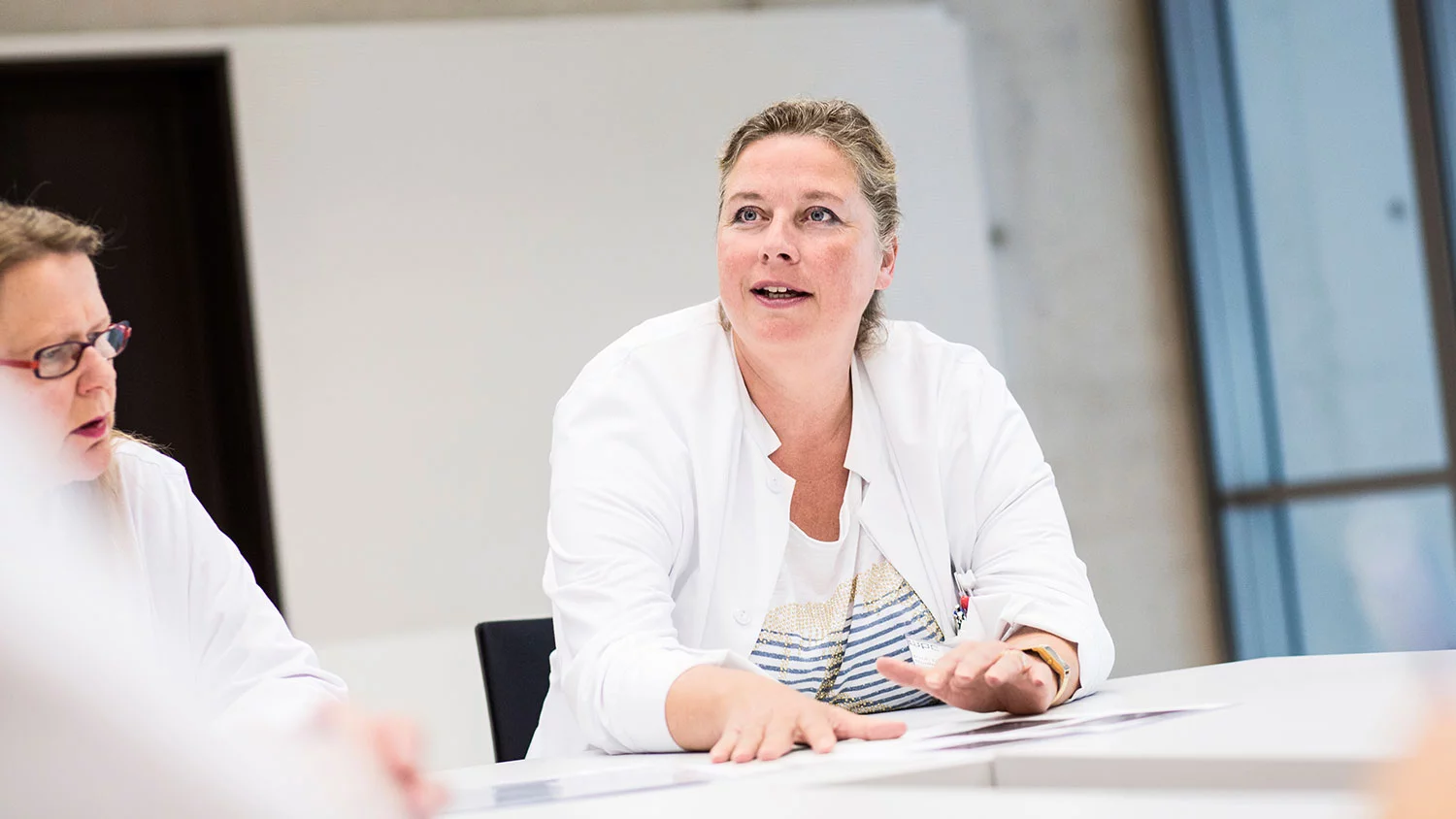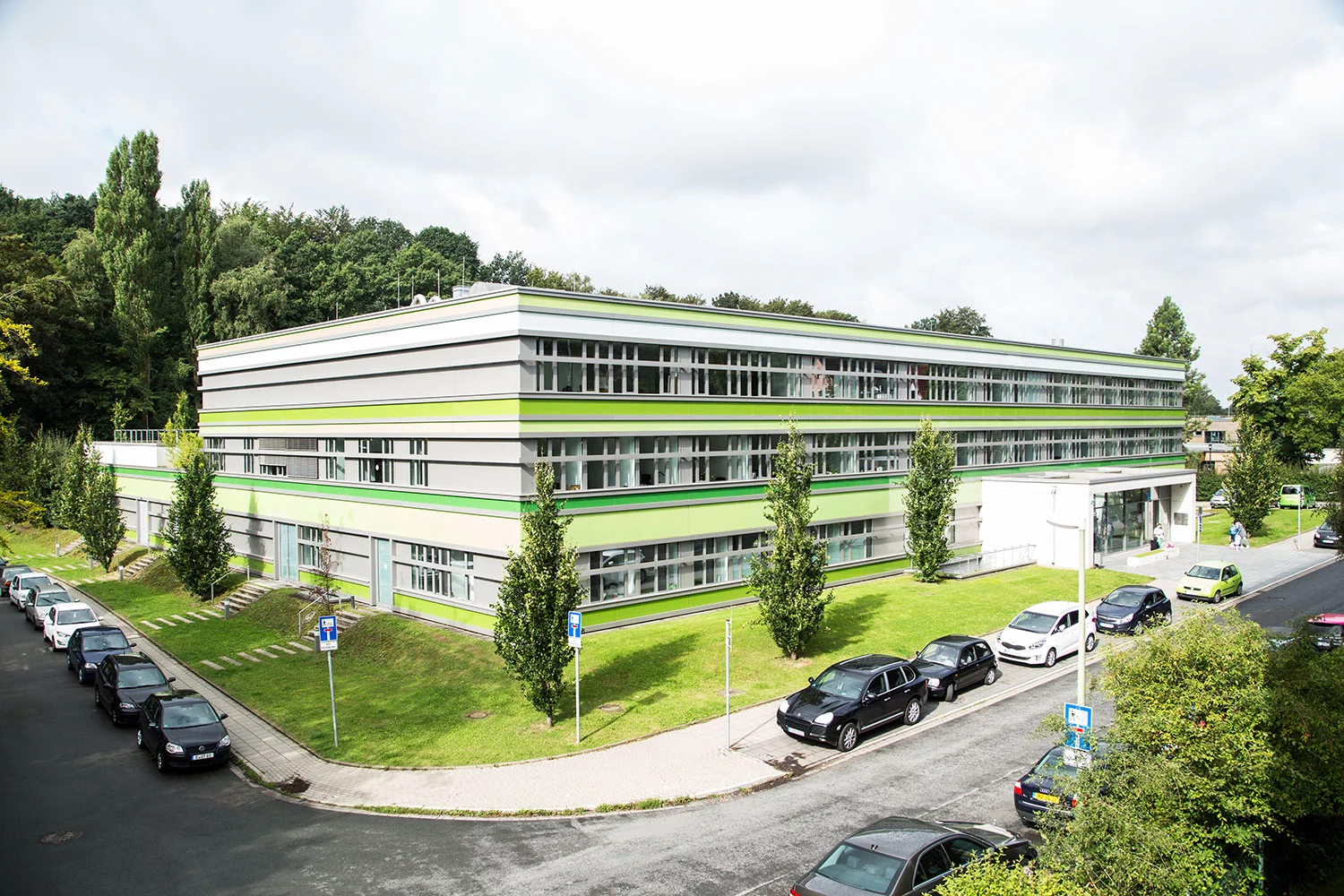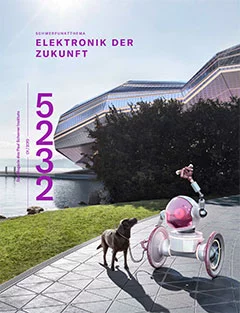At the Paul Scherrer Institute PSI, Beate Timmermann built up a programme providing proton therapy for children with cancer at the same time she was raising her own son. Today she is head of the Clinic for Particle Therapy at the West German Proton Therapy Centre in Essen (WPE) and is considered one of the most accomplished experts in this field.
Beate Timmermann never planned a big career. In her youth Timmermann saw herself becoming a pediatrician with her own practice. Today the 51-year-old is a professor, a clinic director, and a leading specialist in her field of proton therapy for pediatric tumours. Her role model was the doctor who took care of her family when she was growing up in Hamburg. This was an old-school doctor
, Timmermann explains, who made house visits and was the kind of person you could talk to from the heart.
Even as a medical student, Beate Timmermann consulted her family doctor when difficult university exams were coming up.
She passed the exams. But then the doctors glut
put a hitch in her life plan. So many physicians graduated in the 1990s that jobs became scarce. You wrote dozens of applications
, Timmermann says, and couldn't afford to be too picky.
Finally, the young doctor landed a position at the University Hospital in Tübingen – as a radiation therapist. I had no clue about it
, Timmermann laughs. The consolation: In Tübingen the focus was on treating tumours in children.
Instead of a country doctor's office, Timmermann found herself in the hectic daily life of a university hospital. I could only do science at night
, she recalls. During the day, however, I was able to gain deep insights into a very broad and challenging spectrum of modern radiation therapy.
After completing a specialist exam and dissertation on radiation therapy for children, Timmermann read about a novel treatment method: radiotherapy with protons. In the conventional treatment with photons, the beam causes the greatest impact when it strikes the body – even though the tumour is often deeper. The proton beam has its greatest effect only at a defined penetration depth – on the tumour. Thus there is much less collateral damage to healthy tissues.
Proton therapy for children too
In the spring of 2002, the former Department of Radiation Medicine ASM of the Paul Scherrer Institute (now the Centre for Proton Therapy CPT) advertised a medical position in the magazine Deutsches Ärzteblatt. ASM was one of the pioneering institutes in proton therapy: It has been treating ocular tumours since 1984, and beginning in 1996 with the completion of Gantry 1, it became the first equipped to fight tumours deep in the body using the spot scanning technique (also called pencil-beam scanning). This technique allows for the utmost precision in irradiation and therefore is especially well suited for the treatment of tumours in critical areas, in the brain for example. Timmermann applied for the position – and already had a plan when she interviewed with Gudrun Goitein, then head of the department: She wanted to establish proton therapy for children. Especially with small children, many doctors are cautious because radiotherapy can leave behind lasting damage
, Timmermann says. That's why I saw a lot of potential for proton therapy here.
With her idea, she found she was knocking on an open door at PSI. She got the job. The shift to basic research was a culture shock – a positive one. At that time, Gantry 1 was regularly shut down for months at a time due to maintenance and development work on the big proton accelerator at PSI. This accelerator generates the proton beam needed for the treatment. So the doctor, accustomed to stress, was suddenly able to use precious time for science. She began a habilitation at the University of Münster and got in contact with the oncology department at the Zurich University Hospital as well as with the anaesthesia department at the Children's Hospital of Zurich, which should be involved with the treatment of children at PSI. As Timmermann resumes, individual colleagues were sceptical at first about whether this difficult undertaking could succeed. She was able, however, to convince the critics.
Especially with small children, many doctors are cautious because radiotherapy can leave behind lasting damage. That's why I see a lot of potential for proton therapy here.
Not long after she started the new job, her son was born. After the birth, since Timmermann's partner was still living in Munich, she had to take care of her son practically single-handedly. After maternity leave, Kiwi, the PSI nursery, took in her four-month-old son – an exception for a baby. I was enormously grateful for that
, Timmermann recalls. In Switzerland I had no friends or family yet who could have helped me.
Nevertheless, she sometimes hit her limit in rocking both the job and the baby, but she pulled it off – also because her partner soon moved to Switzerland.
From 2004 on, her treatment places for children were a fixed part of the programme. The therapy's successes amazed even Timmermann herself. We were able to fight tumours with high doses without any collateral damage.
In addition, the doctor played a significant role in the further development of proton therapy at PSI. Because Timmermann also wanted to fight large-area tumours, such as in the central nervous system, she worked with physicists and technicians to develop a treatment method with a movable table-top. We used dolls to determine the ideal lying positions for patients. The whole team pitched in to work this out
, she remembers. It was very motivating.
Visitor from the PSI days
In 2009 it was nearly time to enrol her son in school. Timmermann, who in the meantime had become acting director of the new CPT, knew she wanted to go back to Germany. At the time proton therapy was spreading throughout Europe; in Germany alone two facilities were being built. Timmermann received an offer from the Essen University Hospital, where a proton irradiation institute had been established under the umbrella of the West German Tumour Centre. Later came the appointment to the professorship for particle therapy. She left PSI with a heavy heart. “I had made friends here”, she says. My son practically grew up here.
Timmermann was all the more astonished when she arrived in Essen. The proton irradiation unit was not yet ready for operation. Four years of negotiations between the University Hospital and the manufacturer followed. At times, the whole project hung in the balance. Then I thought: Was this move worth it?
The facility finally went into service in 2013. Today the Clinic for Particle Therapy at the West German Proton Therapy Centre (WPE), headed by Beate Timmermann, has four irradiation rooms and last year treated 500 patients, almost half of them children. It is the largest programme of this kind in Europe
, Timmermann says.
She herself is now regarded as a leading expert in proton therapy for children. I almost always start my presentations with the time I spent at PSI
, Timmermann says. Everyone involved with proton therapy knows what a pioneering role PSI has played in it.
Timmermann keeps in touch with former colleagues from Villigan by e-mail, and she meets others again at conferences. And then there is still a special visit from PSI days that Beate Timmermann receives nearly every year in Essen: a boy she freed from a brain tumour. I see how he's growing up, and going to school
, Timmermann says. That is a beautiful proof of the success of proton therapy.
Text: Joel Bedetti



